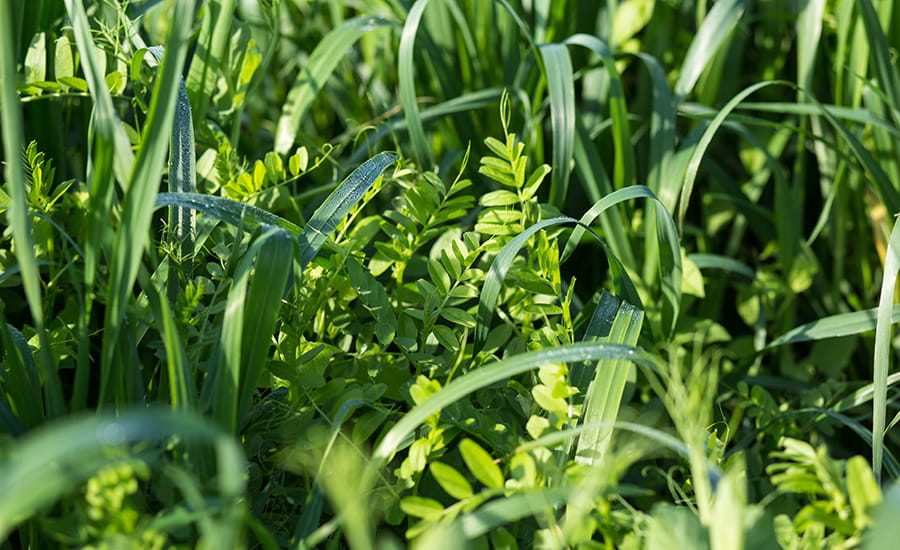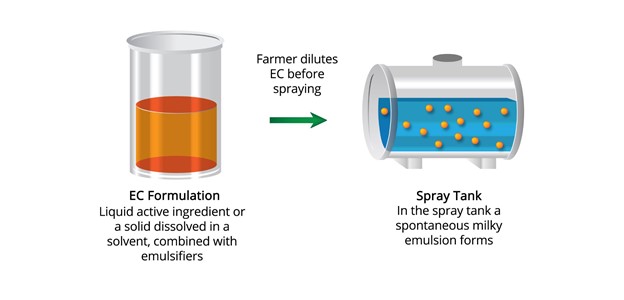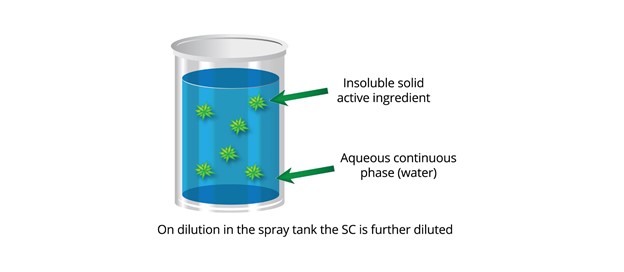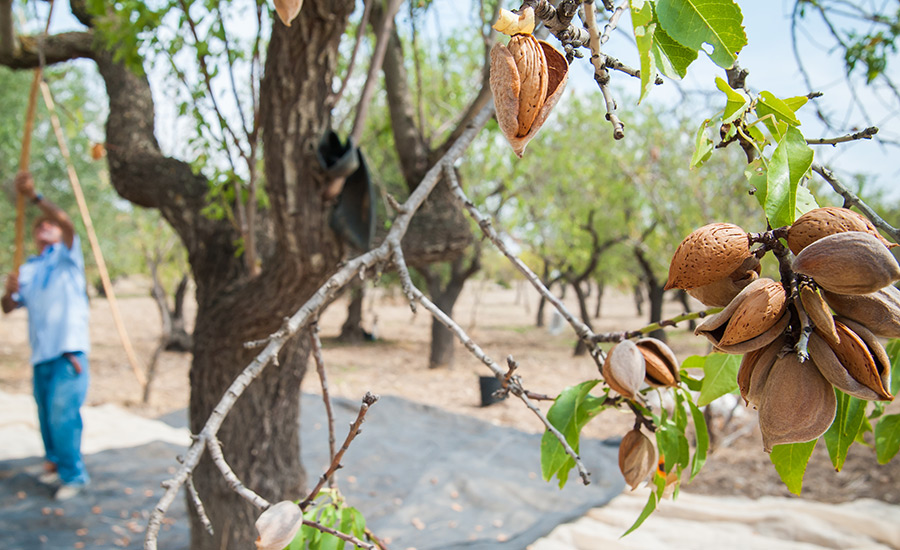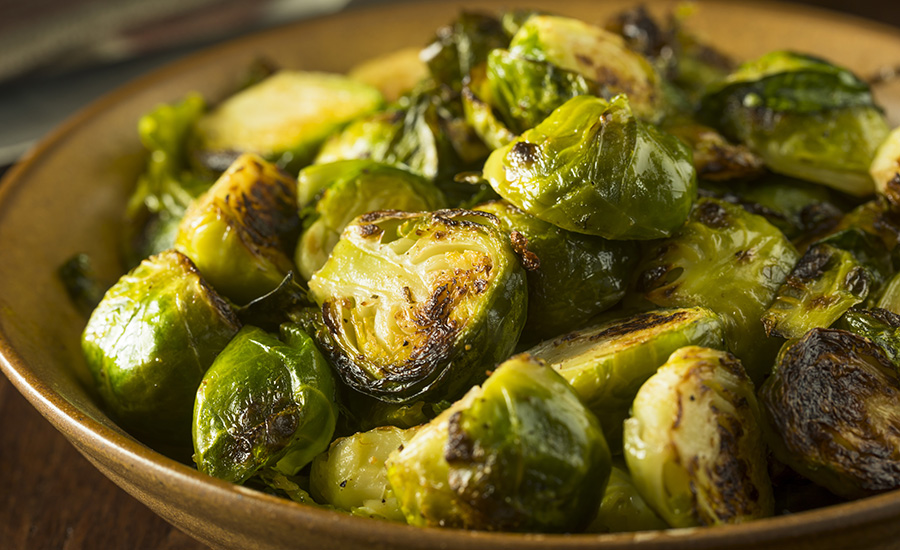Think of Earth as an apple and the soil as the peel. Now, imagine that more than 70% of this apple’s surface is covered in water. That veneer of peel suddenly seems very small indeed.
Dig beneath the surface and you realise that the world’s soil resources aren’t as plentiful as you first thought. When you take into account all of the uninhabitable, non-arable land on our planet, including the snow-bound poles and deserts, you’re left with just 3% of total landmass to grow all the fruit and vegetables we eat.
After reminding her listeners of some stark facts at the Soil resources in the UK: overlooked and undervalued? webinar, Jane Rickson, Professor of Soil Erosion and Conservation at Cranfield University, reminded us that soil is a precious, finite resource. “We’re dealing with a very thin resource that has to deliver all of these goods and services.”
You just need to think of your breakfast, lunch, and dinner to realise just how important soil is. Of all the food we eat, 97% comes from terrestrial sources. However, in recent decades, the many benefits brought by soil have been taken lightly. Apart from providing food, animal fodder, and a surface for football, it plays a vital role in climate change mitigation.
‘Soil is excellent for climate change mitigation,’ said Professor Rickson, recipient of the prestigious Dr Sydney Andrew Medal for 2021. ‘We know that healthy soils can support vegetation and crops and plants in taking out atmospheric CO2.’
A cross section of soil layers. Unless you live on fish and seaweed, it’s likely that almost all of your food sources will come from terrestrial sources.
However, she and her colleagues at Cranfield University have unearthed some unsettling facts about the state of our soils. She mentioned that 12 million hectares of agricultural land worldwide is lost each year due to soil degradation. In the UK, soil erosion rates can be as high as 15 tonnes per hectare per year, with soil formation rates only compiling at a rate of 1 tonne per hectare per year; and, based on current rates of erosion, some soils could disappear completely by 2050.
So, what is being done to arrest this problem? The obvious mammoth in the room is climate change, with extreme weather events such as flash floods precipitating a huge amount of soil erosion. Obviously, climate change mitigation measures on a national scale would help, but adjustments to farming practices could also improve soil resilience on a more local level.
A lot of work is also being done to reduce the intensity of farming to improve soil health. The aim, according to Rickson, is to maintain a fertile seedbed while retaining maximum resistance to soil degradation. There are lots of different ways to do this.
One approach being taken is cover cropping, whereby a crop is grown for the protection and enrichment of the soil rather than for immediate sale. This enriches the soil and helps prevent soil erosion. Another approach is strip-tillage – a minimum tillage system that disturbs only the portion of the soil that contains the seed row, with the soil between rows left untilled. She also mentioned the benefits of soil improvement, with poultry manure and mushroom compost used to improve soil health by Benedict Unagwu among others.
Cover crops such as vetch and oats improve the structure and fertility of the soil.
It is difficult not to have sympathy for farmers at the moment. Climate change falls heavily upon their lands, and they must battle flooding and drought to keep their farms financially viable. Professor Rickson often speaks to the farming community about soil health, with the focus placed on realistic solutions. As one farmer told her: ‘It's hard to be green when you’re in the red.’
Perhaps soil doesn’t capture the imagination the same way as an oak forest or a field ablaze with wildflowers, but its mismanagement is costing us a fortune. She estimated that the combined annual economic cost of soil degradation in England, Scotland, and Wales is £1.5 billion.
According to Professor Rickson, the US is probably the home of soil conservation following the harsh ecological lessons learnt from the Dust Bowl disaster of the 1930s. However, she believes the UK has plenty of knowhow in the area.
‘The UK has an opportunity to be world-leading in this,’ she said. ‘I think we are as good as anyone. Our scientific community understands soil and is really pushing the boundaries in terms of soil science.’
Farmers today are under pressure to produce more food with fewer resources and without damaging the environment around them. Faced with factors such as land pressures, soil fertility, pest management and agricultural policy, farming today is all about efficiency, time and energy saving technology, and the drive to make solutions as sustainable as possible.
This obviously poses the question: what can the agrochemical industry do to increase output on one hand and protect the environment and improve applicator safety on the other?
Formulation technology is becoming increasingly important in answering this question. By designing innovative formulations, agrochemical products can become more effective as well as safer. Without the right formulation, even the best active substance is worth nothing.
Most pesticidal active ingredients are not water soluble or water dispersible, yet the most common mode of delivery is via spray applications of aqueous dilutions. It is necessary to create a formulation of the active ingredient in a way that makes it easily dispersible in water and able to maintain stability over the application time period. Changing what goes into this formulation alongside the active ingredient is crucial in how effectively that material is delivered to where it needs to be.
Demonstration of an EC formulation.
Two of the most common types of agricultural formulations that tackle this issue are emulsifiable concentrates (ECs) and suspension concentrates (SCs). EC formulations are suited to active ingredients that are oil soluble and have low melting points. As they are purely a solubilised active ingredient in an oil or solvent with the presence of emulsifiers, they are simple to manufacture and relatively easy to stabilise. The presence of an oil also enhances the biological activity of the application, making them more efficacious in the field.
SC formulation, with an indication of what occurs upon dilution into the spray tank prior to application.
SC formulations, on the other hand, are suitable for insoluble active ingredients and those with higher melting points. Crucially, as water is the continuous phase, they are also typically safer and more convenient in use for the operator; there is an absence of dust, flammable liquids, and volatile organic compounds.
Built into each of these formulations alongside the active ingredient are formulation additives. Formulation additives, referred to as inert ingredients, are critical to provide the long-term stability to agrochemical products and their ability to mix effectively in the spray tank, making them suitable for [field spray] applications.
While the formulation type targeted is often dictated by the chemical characteristics of the active ingredient, the formulator has the ability to change every element of the spray quality characteristics and agrochemical delivery through selection of formulation additives. Changing both the formulation type and the additives within will habitually have a dramatic effect on the field efficacy of that application and subsequent yield and quality of the crop. Selecting the correct formulation additives is essential in creating a successful formulation, arguably making them as significant as the active ingredient itself.
How formulators learn to map the complex effects within formulations for improved crop protection is just one facet of today’s agriculture challenge.
Interested in learning more about how the formulation of agrochemicals plays its part in feeding the world? Visit: www.crodacropcare.com
To some, the almond is a villain. This admittedly tasty nut takes an extraordinary amount of water to grow (1.1 gallons per nut) and some in California say almond cultivation has contributed to drought.
And so it is no surprise to see the almond lined up in the rogue’s gallery of the thirstiest foods. In a study in the journal Nature Food, University of Michigan (U-M) and Tulane University researchers assessed how the food we eat affects water scarcity.
Meat consumption was found to be the biggest culprit in the US, with the hooves and feet of livestock accounting for 31% of the water scarcity footprint. Within the meat category, beef is the thirstiest, with almost six times more water consumption than chicken.
Almond crops in California have come under heavy criticism due to their heavy water consumption
However, the picture is a little more nuanced. Lead author Martin Heller, of U-M's School for Environment and Sustainability, explains: “Beef is the largest dietary contributor to the water scarcity footprint, as it is for the carbon footprint. But the dominance of animal-based food is diminished somewhat in the water scarcity footprint, in part because the production of feed grains for animals is distributed throughout less water-scarce regions, whereas the production of vegetables, fruits and nuts is concentrated in water-scarce regions of the United States, namely the West Coast states and the arid Southwest.”
Certain types of diets drain the water supply. People who eat large quantities of beef, nuts such as the infamous almond, walnut, and cashew, and a high proportion of water-intense fruits and vegetables including lemon, avocado, asparagus, broccoli, and cauliflower take a heavy toll on the water footprint.
The Brussels sprout is not just for Christmas… it is a less water intense option for your dinner table.
“The water-use impacts of food production should be a key consideration of sustainable diets,” adds study co-author Diego Rose of Tulane University. “There is a lot of variation in the way people eat, so having a picture with this sort of granularity – at the individual level – enables a more nuanced understanding of potential policies and educational campaigns to promote sustainable diets.”
So, what do you do the next time you feel a pang of water guilt? According to the researchers, you could swear off asparagus and that crushed avocado on your toast and replace them with less water intense foods such as fresh peas, Brussels sprouts, cabbage, and kale (but maybe not on your toast). Those beef steaks and hamburgers could make way for other protein sources, such as chicken, pork, and soybeans, and you could graze on peanuts and seeds instead of those honey roasted almonds you love so dearly. Just think of all those gallons of water you’ll save.
For more on this study, visit: https://www.nature.com/articles/s43016-021-00256-2


